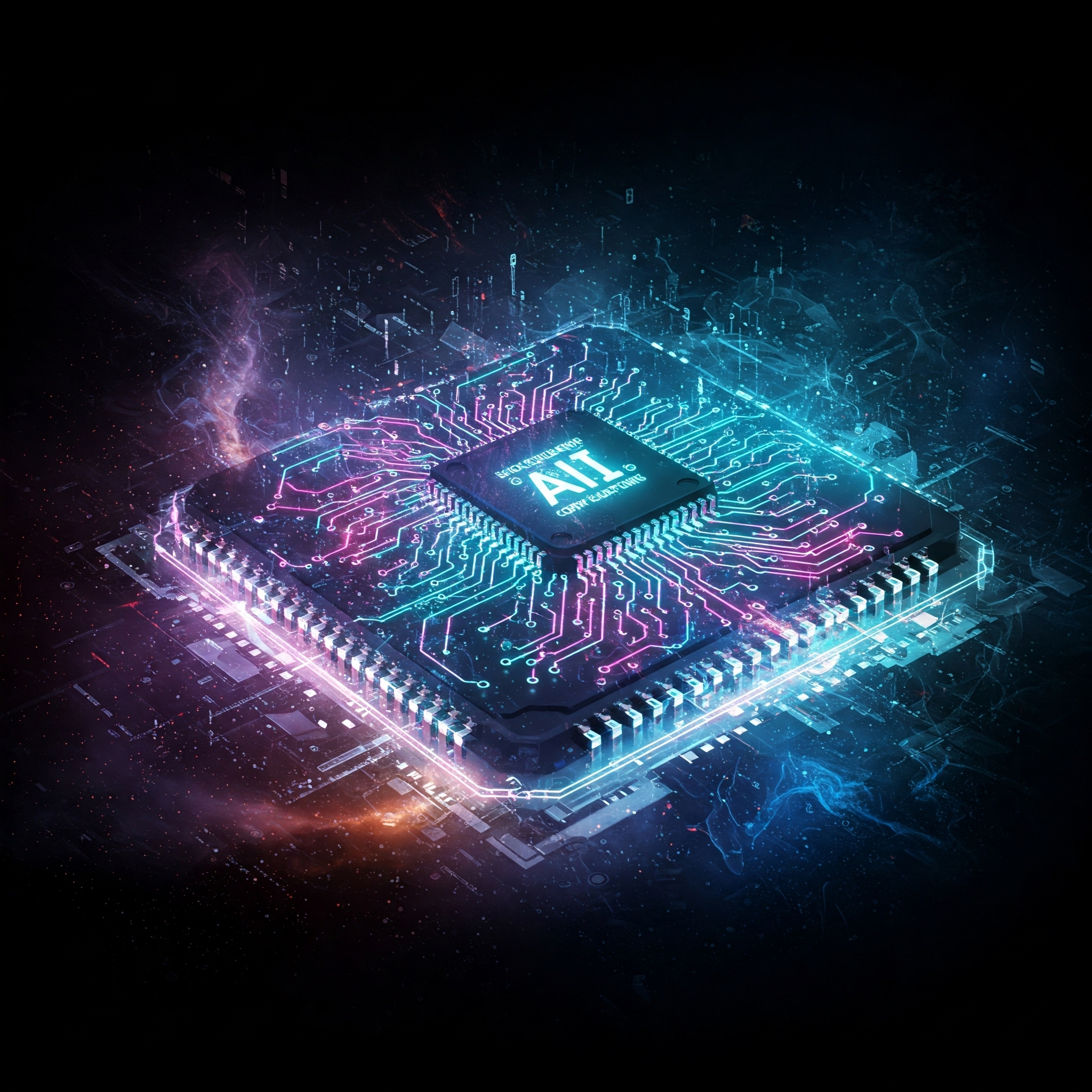Introduction
The semiconductor industry is undergoing a massive transformation. Once considered a niche technical field dominated by Moore’s Law and driven solely by hardware advances, it has now become the beating heart of the digital age. In 2025, semiconductor innovation isn’t just about making chips smaller or faster—it’s about redefining how we compute, analyze, and interact with the world around us. At the center of this shift lie artificial intelligence (AI), edge computing, and other disruptive technologies. This blog explores the current trends, the drivers of change, and what lies ahead for the semiconductor industry.
1. The Role of AI in Revolutionizing Chip Design

1.1 AI-Powered Design Automation
AI is no longer just an application for semiconductors; it’s shaping how semiconductors are built. With Electronic Design Automation (EDA) tools becoming increasingly intelligent, companies like Cadence and Synopsys are employing AI algorithms to speed up design cycles, optimize layouts, and reduce power consumption.
1.2 Agentic AI and SoC Design
Platforms like Cadence Cerebrus AI Studio have introduced agentic AI models that autonomously manage complex multi-block, multi-user SoC (System-on-Chip) designs. This not only accelerates time-to-market by 5X but also enhances design precision, scalability, and collaboration among engineers.
1.3 AI in Semiconductor Manufacturing
AI’s utility extends beyond design. It now plays a vital role in predictive maintenance of fabs (fabrication plants), yield prediction, wafer inspection, and quality control, making the entire manufacturing pipeline smarter and more efficient.
2. Edge Computing: Powering Real-Time Intelligence
2.1 What is Edge Computing?
Edge computing involves processing data closer to the source (e.g., a smartphone or IoT device) rather than relying solely on centralized data centers. This trend is reshaping the semiconductor industry, demanding chips that can handle real-time processing, security, and energy efficiency.
2.2 Edge AI Chips: A New Frontier
Companies like NVIDIA, Qualcomm, and Apple are developing AI-optimized edge chips capable of executing machine learning tasks on-device. This reduces latency, saves bandwidth, and enables privacy-preserving AI applications.
2.3 Industrial Applications Driving Demand
From autonomous vehicles and smart manufacturing to medical wearables and AR/VR, edge computing applications require advanced semiconductor architectures. Low-power, high-efficiency designs are becoming the norm.
3. The Move Toward Specialized Architectures
3.1 End of General-Purpose Dominance
The days of general-purpose CPUs dominating all workloads are over. Today, the rise of domain-specific architectures (DSAs) like Tensor Processing Units (TPUs), Vision Processing Units (VPUs), and Neural Processing Units (NPUs) reflect this change.
3.2 Chiplets and Heterogeneous Integration
To meet performance demands, companies are adopting chiplet-based designs—breaking a chip into multiple smaller functional blocks. This allows mixing and matching of components to build powerful, application-specific systems.
3.3 3D Stacking and Advanced Packaging
3D integration and packaging technologies like Foveros, EMIB, and HBM3 are enabling the stacking of memory and compute elements, thereby enhancing data throughput and performance while minimizing power consumption.
4. Geopolitics and Supply Chain Resilience
4.1 U.S.-China Tech Rivalry
The semiconductor industry is now deeply entangled in global geopolitics. Trade restrictions, export bans, and the race for technological supremacy between the U.S. and China are prompting nations to develop their domestic semiconductor ecosystems.
4.2 India and Europe Enter the Race
Countries like India have launched Production-Linked Incentive (PLI) schemes to build fabs, while Europe is working on its Chips Act to localize manufacturing and reduce dependency on Asian foundries.
4.3 Shift to Regionalization
Supply chains are becoming more localized and resilient. Companies are diversifying suppliers, building facilities across continents, and investing in logistics to buffer against future disruptions like pandemics or wars.
5. Sustainability and Green Semiconductors
5.1 Environmental Footprint of Chipmaking
Semiconductor fabrication is energy- and water-intensive. The industry is facing increased scrutiny for its environmental impact and is under pressure to adopt sustainable practices.
5.2 Green Fabs and Carbon-Neutral Goals
Leading companies like TSMC, Intel, and Samsung are setting carbon neutrality goals and building eco-friendly fabs. Green chemistry, recycling, and alternative energy sources are becoming standard practices.
5.3 Energy-Efficient Chip Designs
Beyond manufacturing, designing chips that consume less power without compromising performance is crucial. ARM, RISC-V, and newer architectures are focusing on this challenge.
6. Quantum and Neuromorphic Chips: The Next Horizon
6.1 Quantum Semiconductors
Although still in its infancy, quantum computing has sparked interest in quantum semiconductors. Companies are exploring silicon-based quantum dots, superconducting qubits, and other hybrid designs.
6.2 Neuromorphic Chips Mimicking the Brain
Neuromorphic chips, inspired by the human brain, are designed to process information in a non-linear and highly parallel fashion. Intel’s Loihi and IBM’s TrueNorth are pioneering examples.
6.3 Use Cases and Research
These chips show promise in robotics, autonomous systems, and cognitive AI where real-time learning and adaptation are critical. Research partnerships between academia and industry are accelerating breakthroughs in this space.
7. The Rise of Open Hardware and RISC-V
7.1 RISC-V Gains Momentum
RISC-V, the open-source hardware instruction set architecture, is gaining traction globally. It offers customization, cost-efficiency, and freedom from proprietary IP licensing.
7.2 Democratizing Chip Design
Open hardware ecosystems enable startups, universities, and small manufacturers to innovate rapidly without the heavy overhead of traditional chip licensing.
7.3 Industrial Adoption
Major players like Western Digital, Alibaba, and even Intel are experimenting with RISC-V cores, marking a shift toward more transparent and agile design practices.
Conclusion: A Pivotal Era for Semiconductors
The semiconductor industry stands at the crossroads of innovation, necessity, and geopolitics. AI and edge computing are reshaping both design and application landscapes. Meanwhile, environmental concerns and geopolitical tensions are driving shifts in supply chain and manufacturing strategies. As we move beyond 2025, one thing is clear: semiconductors are no longer just components; they are enablers of the future.
Whether it’s AI on the edge, quantum breakthroughs, or sustainable chipmaking, the next generation of semiconductors will define how humanity interacts with technology, information, and the world itself.









+ There are no comments
Add yours